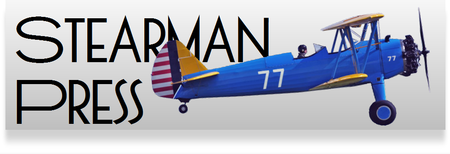What's been happening?
We've shot more 8x10 film in the last few weeks than most people do in a year! Unfortunately, most of it was the same boring shot of our building's door. The freshly painted, light gray door faces south and is evenly lit by the Colorado sun. It is one of the most challenging subjects we've ever found.
We've learned a lot.
Bad news?
We've abandoned the goal of processing two sheets of 8x10 at the same time. This wasn't an easy decision but given the technical, economic and marketing factors involved, it was the right decision.
- Technical: while we would get excellent results with some film and chemistry combinations, we'd get inconsistent results with others. Often, normal landscape shots would look great but the the test shot of the hangar door was awful. We tried dozens of different configurations and agitation techniques. But the complexity of wave physics, surface chemistry and agitation techniques meant there were just too many variables to accommodate in a simple, elegant design.
Two sheets also took a lot more chemistry. We've gotten great results with one sheet and 400 ml of solution (though we'll be recommending a minimum of 500 ml). Two sheets required 1200 ml or more.
- Economic: every technical problem can be solved if you're willing to throw enough money at it! However, it became obvious that a two sheet design was going to get really expensive, really fast. Not just in terms of NRE (non-reoccurring engineering), but the production costs would be significantly higher as well.
- Marketing: Our original goal was to design a simple system that could process 8x10 and smaller. Our market research shows that only 15% of users were insisting on a two sheet system. In fact, another 15% said they'd never process two sheets at once. That left 70% that really didn't care. It just doesn't make sense to complicate a design for everyone when only a few users will actually appreciate it.
What's the good news?
With the two sheet obstacle out of the way, we were able to focus on keeping it simple. This lead to an obvious discovery: film sinks. This is something we all know but probably haven't really thought about. Put a sheet of film in a tray of water and it will sink (once it breaks the surface tension.) Not too surprising since film has a density of around 1.5 g/cm3; water has, by definition, a density of 1.0 g/cm3, so film will sink. (Photo chemistry is pretty close to 1.0.)
Another observation: all the film we've seen will lay flat when wet. Even twenty year old sheets with curly edges flatten right out.
This means that once the film is submerged, it will lay flat and stay submerged. The trick is getting it under the solution quickly and evenly.
Here's where we had another elementary my dear Watson moment: surface tension is our friend. By filling the tray with plain water (pre-wetting), we force the film to flatten out. When we drain the liquid, the surface tension of the liquid trapped under the film will cause it to stick to the bottom of the tray. Now when we add the developer, it will flow evenly across the face of the film.
Okay, so what about those little triangle teeth you show sticking out into the tray? The tabs are there mainly to ensure the film won't rise up out of the liquid if you get carried away during agitation etc. Frankly, we've gotten excellent results without them but plan to include them because, well, we're a bit paranoid.
Even if the film does manage to drift upward, the angled design means that only the very edge of the film will ever contact the tabs. We've seen no scratches.
Wow, this is turning into a really long blog post.
This holder-less design offers numerous other benefits:
- The film is free to slip around in the solution just like it does in normal tray processing.
- We can also accommodate other film sizes by simply dividing the tray into sections as shown in the attached rendering. Production units would ship with dividers for both 5x7 and 4x5. They could easily be configured for other sizes as well, details to be determined.
- It doesn't have to be completely dry. Just wipe down the interior with a towel and reload. A little moisture won't affect anything.
- Preliminary testing indicates that the SP-8x10+ might work for processing prints. However, we haven't done enough testing to be sure.
Patent Pending?
We believe that this new design is so simple that it might just be patentable. Now we've been through the patent process several dozen times and fully understand the challenges that lay ahead. That said, we figured it was a gamble worth the initial filing fee. Given that the process takes two to four years, a lot could change but in the mean time, we can legally claim "patent pending".
So now what?
First, we've got more testing to do. In fact, we might just want you to help. We're thinking of launching a "beta" program in our Colorado studio. The basic idea is to let local photographers come in and give it a try. Details to be announced when we figure everything out and rearrange our shop to accommodate it.
When can I get one?
We're planning to launch a crowdfunding campaign by the end of January. This will probably be a third party app on our store but could be on Indiegogo. It will almost certainly not be Kickstarter. The goal would be to have funding in place by March, production prototypes by mid-April and full production by May/June.
Retail price is still looks to be in the $130-$150 range. Shipping is a challenge because the units are so large but are very light weight.
As always, comments and suggestions are welcome.
